 |
Scaffold and Ladder Safety Training |
1.00 |
This course covers the importance of ladder and scaffold safety, common hazards when using scaffolding and ladders and how to prevent serious injury. |
 |
Capacitación sobre seguridad en andamios y escaleras de mano (Spanish) Scaffold and Ladder Safety Training |
0.50 |
Este curso cubre cómo corregir o eliminar peligros de caídas relacionados con el uso de andamios y escaleras en el lugar de trabajo y comprender los requisitos de la OSHA referentes a seguridad en andamios y escaleras. |
 |
Machinery and Vehicular Safety |
1.00 |
This course covers how to safely operate machinery and work vehicles. You will learn about the hazards of vehicles and machinery. You will also learn about precautions you should take while operating vehicles and machinery and how to protect yourself. |
 |
Safe Vehicle Operation |
0.50 |
This course covers the basic principles of safe vehicle operation, including an introduction to defensive driving concepts and tips for safe driving in rainy or snowy weather. |
 |
Project Teams: Creating a Project Team (Instructor Guide) |
1.00 |
Project teams and non-project teams are similar because they both often have specific time frames in which to complete tasks. However, project teams also have a time frame for the life of the team, whereas non-project teams usually don’t. A non-project team might be established to monitor the effectiveness of an organization’s advertising. The need to monitor advertising effectiveness will be ongoing, and the team will not have an ending date.
In this course you will learn to: identify the characteristics of a project team, and understand who the project stakeholders are, and understand how individual responsibilities and stress affect a project team, and how team members can evaluate their performance.
This Instructor's Edition of this course includes notes and suggestions to assist you in presenting the material, whether in an in-person classroom setting, or as an instructor-led online or distance-learning course. It also provides you with the answers to questions found in mid-lesson activities, as well as in the quiz that concludes the course. |
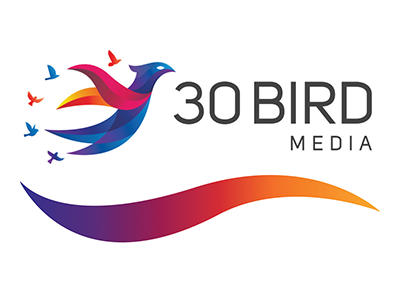 |
Microsoft Project 2021/365 Complete |
16.00 |
30 Bird Media's Microsoft Project 2021/365 Complete courseware covers the concepts and skills needed for maximum productivity in Project, starting with fundamentals and working up to advanced tools and techniques.
There are no specific prerequisites for this course. However, general computer user knowledge is assumed. Any additional experience having worked with forms and/or databases will be helpful.
You will benefit most from this course if you have at least some prior knowledge of project management procedures and practices. It is intended to support you in applying this knowledge through the use of Microsoft Project as a project management tool. |
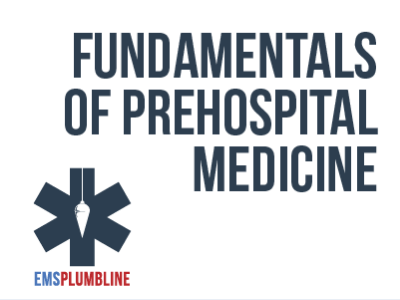 |
Building Upward: Pulse Oximetry for BLS Providers |
1.00 |
Pulse oximetry is a tool that can give a medic a great deal of insight into the patient's condition. Paramedic Instructor Peter Bonadonna does a fantastic job of illustrating the fundamental issues that surround pulse oximetry readings and how they should be interpreted. Final Exam: This multiple-choice exam is designed to test your knowledge of the material you just reviewed. You have two attempts to gain an 80% or higher on this exam. Please take your time and answer each question carefully. |
 |
Microsoft Outlook 2021/365 Complete |
8.00 |
Microsoft Outlook 2021/365 Complete provides the basic and advanced concepts and skills to be productive with Microsoft Outlook: how to communicate via email messages, organize your contacts, and arrange your schedule. It also covers how to organize Outlook items, use advanced message properties, and collaborate with others.
You will benefit most from this course if you want to accomplish basic workplace tasks in Outlook, or if you want to have a solid foundation for continuing on to become an Outlook expert.
The course assumes you know how to use a computer and that you're familiar with Microsoft Windows. It does not assume that you've used a different version of Outlook or a similar desktop application before. |
 |
Construction Hazards |
0.50 |
This course covers the basics when discussing construction hazards you may see daily when working on a construction site. Preventative measures for falls and falling objects, electrical work, as well as excavations will be discussed throughout. |
 |
Enfermedades por calor (Spanish) Heat Illness |
0.75 |
Este curso cubre los diferentes tipos de enfermedades relacionadas con el calor. Se describe cada enfermedad y se proporcionan detalles de prevención. Además, el curso cubre un ejemplo de estudio de caso para ayudarlo a ponerse en una situación y aplicar lo que ha aprendido. |
 |
Ergonomics MSDs |
1.00 |
This course covers the basics of workplace ergonomics along with the identification of musculoskeletal disorders and how to prevent them. |
 |
Excavation and Trenching Awareness |
1.50 |
This course covers OSHA regulations and workers' rights related to excavation and trenching. This includes the basics of trenching, typical hazards, and prevention methods. This course also touches on the importance of soil classifications and their impact on excavation safety. It aims to help participants understand the hazards and take steps to work safely in these environments. |
 |
Project Teams: Conducting Team Meetings (Instructor Guide) |
1.00 |
You should hold regular project team meetings in order to maximize the effectiveness of a project.
After the team has been assigned, you should schedule an introductory meeting, and set team goals. The purpose of an introductory meeting is to familiarize team members with each other, introduce the facilitator and recorder, and clarify questions that team members might have.
In this course you will learn to: identify the various roles in project team meetings and maximize the effectiveness of team meetings, understand the goal setting process in introductory meetings, and identify various issues that a team might face during team meetings.
This Instructor's Edition of this course includes notes and suggestions to assist you in presenting the material, whether in an in-person classroom setting, or as an instructor-led online or distance-learning course. It also provides you with the answers to questions found in mid-lesson activities, as well as in the quiz that concludes the course. |
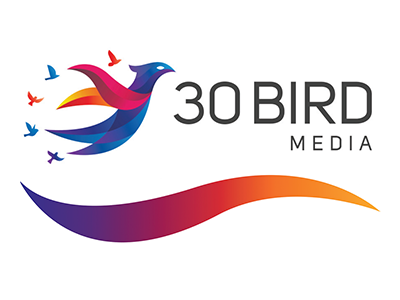 |
Microsoft Windows 11 |
8.00 |
30 Bird Media's Microsoft Windows 11 course provides the basic knowledge needed to use and perform basic configuration of a computer running Windows 11; this includes basic operating system features, using and installing apps, managing files and common external devices, using network connections and applications, configuring system settings, and personalizing Windows environment and privacy features.
You will benefit most from this course if you are the primary user of a Windows 11 computer and wish to become proficient with its features, but are not yet a power user or computer technician.
This course assumes you are familiar with using a keyboard and mouse, accessing the internet with a web browser, and other basic aspects of using a modern computer. It does not assume you have used earlier editions of Windows or other specific operating systems, or that you have owned or managed a computer before. |
 |
Building Upward: BLS Pharmacology Lesson 1—Albuterol |
1.50 |
The Building Upward Series is designed for the EMT who would like to review their basic skills and learn a little more than what was offered in the standard original course. If you are an EMT who is looking for a challenge and would like to know what questions to ask, this series is for you. Most BLS providers find the world of pharmacology to be one of the more confusing topics in prehospital medicine. This is the first lesson in a series that gives the BLS provider an opportunity to relate some advanced concepts to their practice as BLS providers. We begin with the commonly used medication albuterol sulfate and discuss many fundamental concepts that every provider should know when administering medications in a prehospital setting. Final Exam: This multiple choice exam is designed to test your knowledge of the material you just reviewed. You have two attempts to gain a 75% or higher on this exam. Please take your time and answer each question carefully. |
 |
Kangaroos and Kin |
1.00 |
|
 |
Making Your Home A Safer Place |
0.75 |
This course covers household safety. This includes fire and kitchen safety, emergencies, infant safety, and more. This course will help you learn about the best practices for everyone inside the house, from infants to pets. It is just one of the many health and safety courses we offer. |
 |
Asbestos Safety Awareness |
1.00 |
This course covers general information regarding asbestos, such as what it is and where it is found. The associated health hazards and the ways to protect yourself and co-workers against asbestos hazards are also discussed in this course. This course will also teach you how to analyze and discuss case studies regarding asbestos. |
 |
Introduction and Understanding of OSHA |
0.75 |
This course covers the basic introduction to OSHA, its mission and how it's achieved, and what OSHA's role is in the workplace. |
 |
Introduccian y Conocimiento de OSHA (Spanish) Introduction and Understanding of OSHA |
0.75 |
Este curso está diseñado para dar a los participantes una introducción a la OSHA. Al final de este curso los participantes tendrán una mejor comprensión de la misión de OSHA, la Ley de OSHA, la Cláusula de Deber General, y cómo ofertas OSHA con las inspecciones de trabajo, lesiones y enfermedades. |
 |
Project Teams: Communicating in a Project Team (Instructor Guide) |
1.00 |
Although most people think of communication as the act of speaking, the act of receiving a message, or listening, is an extremely vital part of communication. Seventy to 90 percent of your time is spent listening, not speaking. Active listening includes not only hearing words that are spoken, but interpreting the verbal message and nonverbal communication as well.
During a project team meeting, you need to communicate with clarity to ensure that the entire team understands what is said.
In this course you will learn to: use good listening skills when communicating within a project team, understand and use good verbal communication skills and empowerment to communicate effectively within a project team, and receive and give feedback.
This Instructor's Edition of this course includes notes and suggestions to assist you in presenting the material, whether in an in-person classroom setting, or as an instructor-led online or distance-learning course. It also provides you with the answers to questions found in mid-lesson activities, as well as in the quiz that concludes the course. |
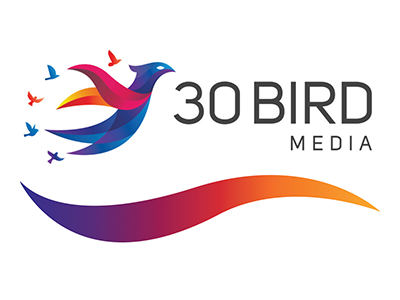 |
Microsoft Access 2021/365 Complete |
16.00 |
This course provides the basic and advanced concepts for the use of Microsoft Access: How to navigate the Access interface; how to create and modify tables, queries, forms, and reports; how to create advanced queries, forms, and reports; how to create macros; and how to manage your databases.
You will benefit most from this course if you want to be an advanced user of Access.
The course assumes you know how to use a computer, and that you're familiar with Microsoft Windows. It does not assume that you've used a different version of Access or another database system before. |
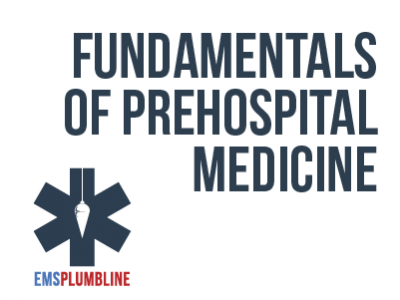 |
Building Upward: BLS Diabetes Discussions |
2.00 |
We captured an engaging discussion between a retired ALS provider and a system medical director. Michelle Cerone and Dr. Jeremy Cushman spoke about the topic of diabetes. Refreshing BLS providers can use the information from the discussion and the scenarios that were built following its conclusion to meet minimum competencies and more.
Final Exam: This multiple-choice exam is designed to test your knowledge of the material you just reviewed. You have two attempts to gain an 75% or higher on this exam. Please take your time and answer each question carefully. |
 |
Lemurs |
2.00 |
In this module, you'll learn about the natural history and conservation of a fascinating group of primates: lemurs. |
 |
Indoor Air Quality |
1.00 |
This course covers indoor air quality (IAQ) and useful associated skills. You will learn the difference between sick building syndrome and building-related illness, as well as the conditions that cause these illnesses. You will also learn model IAQ policies and practices. |


























